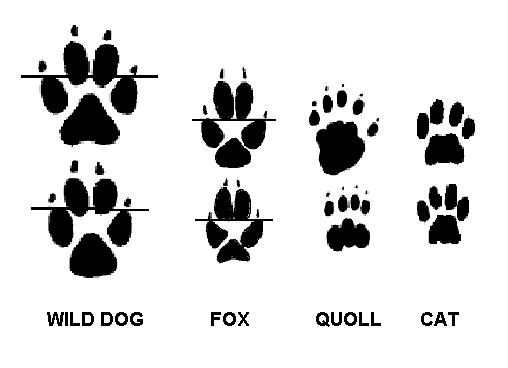Wild dogs - how to recognise the signs
Do you have wild dogs? - Learn to recognise the signs.
It is common for wild dogs to be present in an area but go unnoticed or unrecognised. No matter what colour a free-roaming dog is, if it is not your dog it should be considered a wild dog. There are several indicators that suggest wild dogs might be present in your area.
The first signs of wild dog predation are often livestock carcases, flightiness of livestock in response to disturbance, such as mustering with dogs, or injured and straggling livestock.
If adult sheep or calves are the prey then wild dogs would normally be implicated, whereas lambs may be killed by foxes, wild dogs or eagles. When carcasses are fresh, inspect for signs of blood, saliva and bite marks and footprints around the animal.
The presence of dog footprints at the carcasses does not necessarily mean predation was the cause of death. Pieces of wool with patches of skin attached and blood trails, are good indicators of wild dog attacks.
If these are not apparent and there are no other obvious explanations for the death, skin the neck area and bruising and tooth marks will be obvious if dogs have attacked and killed the animal. One should never discount stray town or farm dogs as potential killers.
The age, body position and location of a sheep or calf carcass may give some idea whether wild dogs were involved. Wild dogs will attack sheep of all ages but it is less common for them to attack cattle older than 12 months. Attacks can occur anywhere, whereas livestock dying of natural causes generally die in a protected area.
Wild dogs often attack from behind as sheep or calves move away. If attacked animals survive, they may have substantial tissue damage around the hindquarters, be lame, be without tails or have skin hanging from them. Sometimes, ears and tails are chewed on older cattle. Surviving calves often show only teeth marks as evidence of dog attack and the area around the bite becomes swollen through infection and flystrike.
PestSmart have a handy guide to help you determine wild dog presence on your property.
Contact your local biosecurity officer for more information about wild dogs and control methods suitable for your property.

Figure 1: PestSmart; Relative size and shape of wild dog, fox, quoll and cat prints.